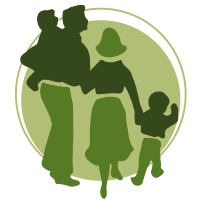
Posture in Children
posture
- noun
- “The position in which you hold your body when standing or sitting”
What does having good posture mean?
The main components of good posture are those that allow your weight balanced over your centre of gravity (your feet) equally, sitting up straight and maintaining correct form when moving/exercising (Watson & C Mac, 2000).
Here are some elements a Chiropractor will look for during an examination regarding posture:
- Ears level
- Shoulders level
- Elbows level
- Hips level
- Knee heights even and pointing forward
- Ears, shoulders, pelvis, knees and ankles in line (from the side)
- Abdominal muscles braced
Why is good posture in children important?
In their first few years of life children grow rapidly and their postural systems are constantly developing and adapting, by 10 years old most of these systems have matured (Admin, 2018).
Gravity exerts force on joints, ligaments and muscles and good posture helps distribute this force evenly throughout the body. Therefore, no one structure is being stressed. Being able to initiate good movement patterns early on is vital in preventing structural changes occurring and increasing the risk of pain and injury. Posture plays an important role for children because the habits they develop in childhood can stay with them for a lifetime (Admin, 2019).
“It’s easier to maintain good postural habits in children than it is to fix the problems they cause in an adult.”
What activities can lead to bad posture in children?
- Hunching and rounding the shoulders whilst sitting
- Spending too much time looking down e.g. mobile phones, tablets, game consoles.
- Not getting enough or a variety of physical activity
- Sitting too much for too long
- Wearing shoes that are too rigid or restrictive (Admin, 2019)
What problems can bad posture cause?
- Back pain
- Shoulder pain
- Neck pain
- Fatigue (tension and compression added to compensatory muscles)
- Headaches
- Postural/structural changes
- Changes in gait (Admin, 2019)
What are some ways to help encourage good posture in children?
- Keep them active
In the UK it is recommended that children aged 5-17 should do at least an average of 60 minutes through the day of moderate-to-vigorous intensity, mostly aerobic, physical activity. This can be achieved in short bursts, but some activity should be impact (e.g running), for strong bones and dynamic muscles, which help support a healthy cardiovascular system (WHO, 2022).
- Limit Electronics
Restrict the amount of time spent being sedentary, particularly the amount of recreational screen time. This usually promotes bad postural habits and inhibits physical exercise (Quka et al., 2015).
- Encourage good posture
“Sit/stand like the tallest giraffe or sunflower.” Creating length through the spine allows the correct postural muscles to function. The more these muscles work, the more the brain learns that this is normal and will do it automatically.
- Strong feet
Allow children to run around barefoot wherever safe, this can help strengthen and tighten foot muscles to help stabilise the feet and help support better posture.
- Avoid creating dominance in one side of the body
Humans are creatures of habit, especially children. When riding a scooter – change the pushing leg, encourage footballers to strike with both feet etc.
- Equal loading
Keep school bags as light as possible, only carrying what is needed and make sure backpacks are worn on BOTH shoulders.
- Don’t over-stretch
Young children are usually quite flexible, hypermobility can be as problematic as stiff bodies (Admin, 2019).
- Encourage good balance



